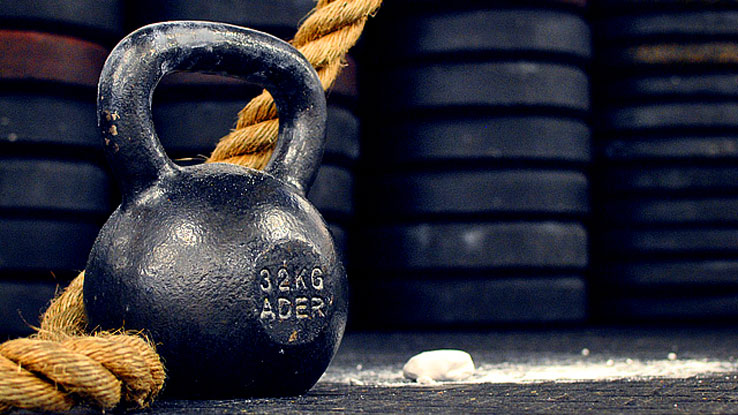Harbinger Hypertrophy
Let's cut the bullshit and get to the brass tacks. For decades, men built slabs of muscle with simple, three day-per-week training programs. They trained their whole bodies in one brief workout session and they grew big and strong. Scoff all you want, but tens of thousands of trainees can't be wrong.
Well, it's high time we look into the past, learn from what we see, and build a new future.
We must learn from the successes and just as importantly, the failures. Yes, although this classic hypertrophy plan worked well, it wasn't perfect. And today we know what we can do to fix the drawbacks.
Let's break it down right now. The majority of non-steroid injecting trainees who've built respectable physiques have done so with the following, undisputable parameters:
- They train every major muscle group three times each week.
- They keep intensity levels sufficient without overindulgence.
- They choose a training volume that can be maintained along with the stressors of life.
- They execute compound, multi-joint exercises that have been shown to produce the most hypertrophy.
- They keep each training session as brief as possible.
- They allow at least 48 hours of recovery between workouts.
I've worked with trainees at every imaginable level of the fitness spectrum, and the aforementioned elements are ubiquitous in their most successful hypertrophy programs. So I often wonder why they ever strayed. Why stop doing what's working?
Usually their reasoning is based along the following statement that I recently heard from a veteran of the iron game: "Hell," he said, "I don't know why I ever stopped doing it. I just assumed there was a better way." Well buddy, I'm here to tell ya, there ain't no better way!
I've written numerous training programs for T-Nation, and they all work. But, oftentimes, trainees don't seek what I seek. They want to look good nekkid, period. Not only that, but they don't give a rat's ass what strength qualities they're training. All they care about is the most efficient and effective route to the physique they've only seen in pictures.
It's time for a change. I want each and every one of you to see that physique in the mirror, not just in magazines. But as I said, we must also learn from the failures of past programs. Burnout and training injuries were often a "given" in old-school, total-body programs. The reason for this indiscretion is simple: poor planning.
Therefore, this article is based on the successes of the past along with my own successes as a trainer. I've learned to properly plan my clients' programs so results are steadfast and continuous.
Every single time I hit the gym, I perform a total-body workout with most of the following guidelines. I doubt that will ever change. In fact, that's how I added almost 100 pounds of muscle to my frame. I don't know why I ever wandered, so I'm here to keep you from running astray.
The single biggest mistake trainees have made in their quest for the ultimate physique is in periodization parameters. Simply speaking, they keep executing the same damn parameters in hopes of the body not "catching on" to what they're doing. Big mistake, my friends. Our bodies are designed for one sole purpose: adaptation. If you forget that, then you can forget about ever creating the physique of a Greek God.
Bill Starr came damn close to pulling off one of the best training programs with his classic text, The Strongest Shall Survive. His initial parameters were excellent. Unfortunately, his program wasn't willing to adapt, so progress on his "Big Three" program came to a screeching halt for most trainees. You can't endlessly perform the same exercises with the same parameters and keep experiencing results!
Now the dichotomy arises. We must incorporate the variables that withstood the test of time along with a new plan for continued progress. It's time to take the past, present and future and blend it into a new hybrid plan!
The How
- Exercises per Session: 6
- Sets per Muscle Group: 2-4
- Reps per Exercise: 15-18
Rest between sets for the same muscle group: 60-120 seconds, and 120-240 seconds (antagonist training)
The Why
The first thing you probably notice with the above parameters is variance. This is the key to your consistent hypertrophy success. A lack of variance is the single biggest reason why trainees aren't still talking about the continuous progress they received from some of the most popular hypertrophy programs. Without consistent change, results will be anything but consistent.
Every session is going to consist of six exercises. Why? Because my empirical evidence has shown that natural trainees can consistently maintain six exercises per session without burning out.
It's imperative to base your exercise selection around compound, multi-joint exercises. Four out of the six exercises for each session must be compound exercises. Six sissy-assed, single-joint isolation exercises ain't gonna do the trick. But, you can perform a few of my recommended single-joint exercises for two of the six exercises. Here's the list you must choose from:
Compound Exercises
- Chest: Incline, flat, decline barbell or dumbbell bench presses. Wide-grip dips.
- Back: Upright or horizontal rows. Pull-ups or pulldowns with pronated, semi-supinated, and supinated grips.
- Deltoids: Standing or seated military presses with a barbell or dumbbells utilizing pronated, semi-supinated or supinated hand positions.
- Quads: High-bar full barbell squats, hack squats or front squats.
- Lower Back/Hips: Traditional and/or sumo-style deadlifts or Good Mornings. Power cleans or snatches.
Single-Joint Exercises
- Biceps: Barbell curls, hammer curls or preacher curls.
- Triceps: Lying barbell or dumbbell triceps extensions, and pronated or supinated grip pressdowns.
- Deltoids: Front, side or rear dumbbell raises.
- Hamstrings: Glute-ham raises or leg curls.
- Calves: Standing, seated or donkey calf raises.
Stick to the above list of exercises for optimal results.
First and foremost, proper periodization planning is imperative. Without sufficient set/rep/load/rest parameters, even the best exercises won't produce results. Therefore, I've devised the following periodization plan for unsurpassable hypertrophy increases:
Week 1
For all workouts, choose a weight that forces you to near-failure for the last rep of the last set.
Workout 1
| Workout | Sets | Reps | Rest |
|---|---|---|---|
| 1 | 3 | 5 | 1 min. |
| 2 | 3 | 8 | 90 sec. |
| 3 | 2 | 15 | 2 min. |
Week 2
Perform with the same parameters as Week 1, but execute antagonist training for all six exercises (more on this later).
Week 3
| Workout | Sets | Reps | Rest |
|---|---|---|---|
| 1 | 4 | 5 | 1 min. |
| 2 | 4 | 8 | 90 sec. |
| 3 | 3 | 15 | 2 min. |
Week 4
Perform the same parameters as Week 3, but execute antagonist training for all six exercises.
Week 5
| Workout | Sets | Reps | Rest |
|---|---|---|---|
| 1 | 2 | 18 | 2 min. |
| 2 | 2 | 8 | 1 min. |
| 3 | 2 | 12 | 90 sec. |
Week 6
Perform the same parameters as Week 5, but execute antagonist training for all six exercises.
Week 7
| Workout | Sets | Reps | Rest |
|---|---|---|---|
| 1 | 3 | 18 | 2 min. |
| 2 | 3 | 8 | 1 min. |
| 3 | 3 | 12 | 90 sec. |
Week 8
Perform the same parameters as Week 7, but execute antagonist training for all six exercises.
- Weeks 1,3,5 and 7 are to be performed with straight sets. In other words, perform one set of the first exercise, rest, perform your second set, and continue for all the recommended sets before moving on to the next exercise.
- Weeks 2,4,6 and 8 are to be performed as antagonist training. Every session consists of six exercises so antagonist training is simple; all you have to do is perform three antagonist exercise groupings during each workout. For instance, perform quads/hams, chest/back, and biceps/triceps exercise pairings for the recommended sets and reps.
Example: Do one set for chest, then one for back, then another for chest, etc. Then move on to the next pairing, like quads/hams or biceps/triceps. - Choose four exercises under the list of compound exercises. Choose two exercises under the single-joint exercise list. Don't leave out any major muscle groups.
- Constantly rotate exercises from each category. In other words, don't always start your session with a chest/back pairing. You must keep rotating the body parts and exercises you begin each session with.
- Don't perform the same exercise for more than two weeks in a row. For example, if you performed a flat barbell bench press as your chest exercise for Weeks 1 and 2, you must switch to either incline, decline or dumbbell bench presses for another two weeks before switching again.
- Increase the load 1.25 to 2.5% with each subsequent workout.
- Perform all three workouts within a seven-day timeframe with 48-72 hours rest between workouts.
- Be creative! I'm giving you endless options. Just be sure to pick four compound exercises and two single-joint exercises with each session. You can rotate exercises as much as you desire. All you have to do is follow the prescribed parameters.
The future of training is here. Take charge and use these guidelines for lifelong hypertrophy gains!





